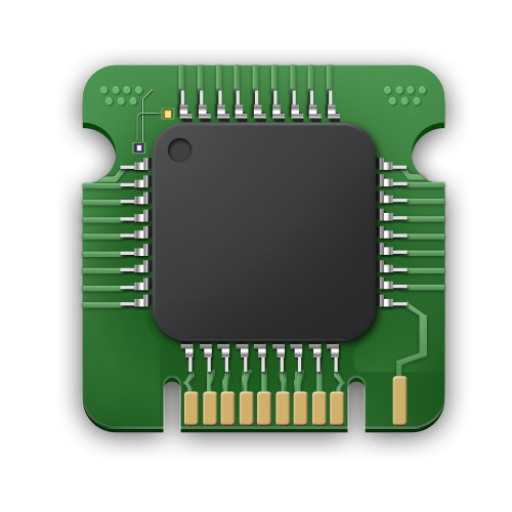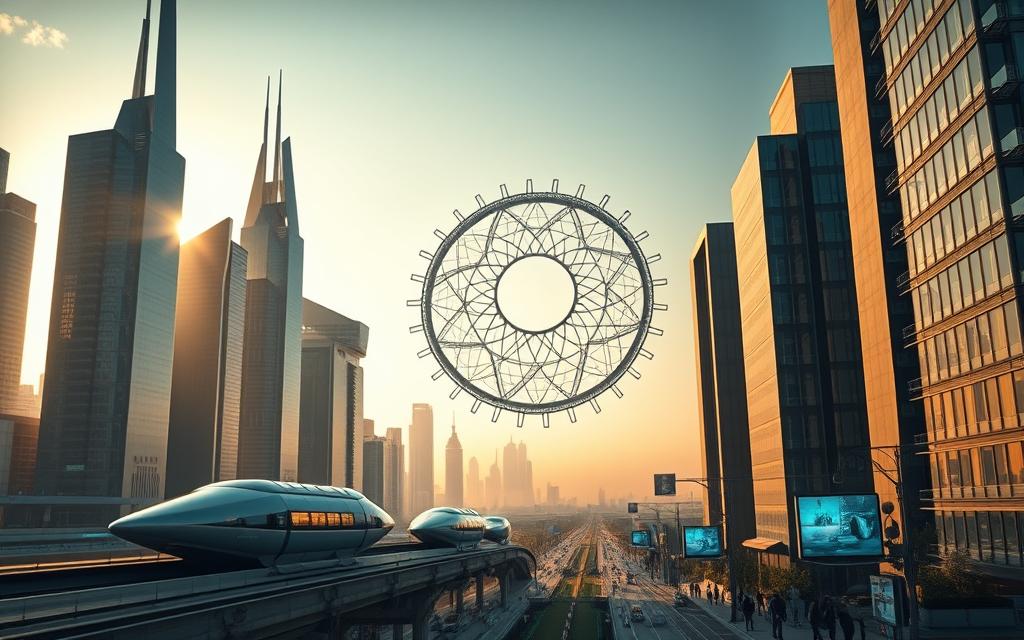Technology has become an integral part of our world, transforming how we live, work, and interact with the world around us.
The rapid evolution of technology has led to significant advancements in various sectors, including communication, manufacturing, and healthcare, profoundly impacting our lives and society.
Throughout history, technology has driven progress, shaping human development and influencing how we access information and manage our time.
As we navigate this complex digital landscape, understanding the role of technology in our daily routines and larger social structures is crucial for making informed decisions.
Understanding What About Technology Means in Modern Society
As we navigate the complexities of the 21st century, understanding the impact of technology on our daily lives becomes increasingly important. The rapid evolution of technologies has transformed the way we live, work, and interact with one another.
Defining Technology in the 21st Century
In the modern era, technology encompasses not just tools and machines but complex systems that are integral to our society. It represents the application of scientific knowledge for practical purposes, particularly in industry and daily life. The impact of technology on our lives is multifaceted, influencing various aspects of our existence.
The Evolution of Technological Innovation
The history of technological innovation shows a pattern of accelerating development, with each breakthrough building upon previous advances. This has led to significant improvements in various sectors, including healthcare and agriculture, ultimately enhancing our quality of life and solving complex global challenges. Key advancements include:
- Improved access to energy, electricity, sanitation, and clean water
- Increased productivity from technological change, driving the long-term decline of global poverty
- Advances in medical innovations, contributing to the decline in child mortality and improved life expectancy
The Transformative Power of Technological Advancements
The impact of technological advancements on our daily lives cannot be overstated. As we continue to harness the power of technology, we are witnessing significant transformations across various sectors.

Improved and Accessible Communication Systems
Modern communication systems have revolutionized how people connect across the world, eliminating geographical barriers and transforming business, emergency services, and personal relationships. With the advent of text-based messaging and other digital communication tools, the way we interact has become more efficient and accessible.
Enhanced Productivity and Efficiency
Technological advancements have dramatically enhanced productivity across industries by automating repetitive tasks and optimizing complex processes in ways previously unimaginable. This has led to significant gains in efficiency, allowing businesses to operate more effectively and make better use of their resources.
| Industry | Pre-Technological Advancements | Post-Technological Advancements |
|---|---|---|
| Manufacturing | Manual labor-intensive | Automated processes with increased efficiency |
| Communication | Limited by geographical distance | Instant global connectivity |
| Information Access | Limited to physical resources | Global access to vast information and knowledge resources |
Democratization of Information and Knowledge
The democratization of information has given unprecedented access to knowledge resources that were once limited to elite institutions. This shift has empowered individuals and communities, fostering a more informed and educated global population. As technology continues to evolve, we can expect even more innovative ways to access and utilize information, further bridging the gap between different segments of society.
“Technology is not just a tool, it’s a catalyst for change, driving innovation and transforming the way we live and work.”
As we look to the future, it’s clear that technology will continue to play a pivotal role in shaping our world. By understanding and embracing these advancements, we can harness their potential to create a more connected, efficient, and enlightened society.
How Technology Has Revolutionized Key Sectors
Technological advancements have had a far-reaching impact on critical sectors, transforming the way they operate and deliver services. This transformation is evident in various industries, including healthcare, education, and energy.
Healthcare and Medical Innovations
Healthcare technology has revolutionized medical treatment through innovations like telemedicine, AI-assisted diagnostics, and personalized medicine, significantly extending lives and improving patient outcomes. Medical devices and pharmaceutical manufacturing processes have also been enhanced, making treatments more effective and accessible.
Education and Learning Platforms
Educational technology has created unprecedented learning opportunities through online platforms, interactive content, and personalized learning paths that adapt to each student’s needs. This has democratized education, allowing people in remote areas to access quality educational content.

Energy and Sustainable Development
The energy sector has seen significant innovations, enabling more sustainable development through renewable technologies, smart grids, and energy-efficient systems. Technology has transformed how we harness, distribute, and conserve energy resources, playing a crucial role in addressing climate change challenges.
In conclusion, technology has revolutionized key sectors, improving the quality of life for people and contributing to sustainable development. As technology continues to evolve, we can expect even more innovative solutions to emerge.
The Dark Side of What About Technology
The increasing reliance on technology has a darker side that affects various aspects of our lives. While technology has brought numerous benefits, its constant use has been linked to several negative consequences.
Physical and Mental Health Concerns
Extended technology use has been linked to numerous physical health concerns, including eyestrain, repetitive stress injuries, and disrupted sleep patterns that affect overall wellbeing. The constant use of computers and other digital devices can lead to physical effects on the body, including hand or wrist pain and sleep deprivation, which can eventually impact mental health.
Social Isolation and Cyberbullying
The digital world has created new forms of social harm, with cyberbullying affecting people of all ages, particularly vulnerable adolescents. Social isolation has emerged as a concerning trend as some individuals replace real-world interactions with online activities, fundamentally changing the way humans connect.
Misinformation and Security Threats
The spread of misinformation or outright lies, the prevalence of bullying and cyber attacks, and other unpleasantries are all common side effects of our cyberspace—and they can lead to anxiety, depression, addiction, and other mental health disorders. The information ecosystem has been compromised by the rapid spread of misinformation, making it increasingly difficult for people to distinguish between reliable and unreliable sources.
| Negative Impact | Consequences |
|---|---|
| Physical Health Concerns | Eyestrain, Repetitive Stress Injuries, Disrupted Sleep Patterns |
| Social Isolation | Reduced Real-World Interactions, Increased Online Activity |
| Misinformation | Anxiety, Depression, Addiction |
As the discussion around the negative impacts of technology continues to grow, it is essential to consider the findings of recent articles and research. By understanding these issues, we can begin to address the challenges posed by the technology and work towards a more balanced use of digital devices in our daily lives.
Achieving Balance in a Technology-Driven World
With technology omnipresent, setting boundaries is key to a healthy lifestyle. As we navigate our daily lives, it’s essential to strike a balance between our technology use and other activities that promote wellbeing.

Setting Healthy Boundaries with Digital Devices
Establishing clear boundaries with digital devices is crucial. This can be achieved by implementing simple practices such as charging your phone outside the bedroom, turning off devices during mealtimes, and setting time limits for computer, tablet, or TV use. By doing so, individuals can reduce the likelihood of excessive technology use and create space for other activities.
- Designate tech-free times and spaces in daily routines.
- Practice regular “digital detox” to reset the relationship with technology.
- Turn off notifications to minimize distractions.
Mindful Technology Consumption Strategies
Mindful consumption of technology involves being purposeful and present when using digital tools. It’s about recognizing the need to use technology in a way that supports our goals rather than detracting from them. Strategies include using analog tools for certain tasks, such as taking handwritten notes, and regularly assessing whether the use of technology is serving our needs.
- Use technology with a specific purpose in mind.
- Regularly assess the benefits and drawbacks of technology use.
- Explore alternative methods for tasks, such as analog tools.
By adopting these strategies, individuals can foster a healthier relationship with technology, leading to a more balanced life. This involves ongoing self-assessment and a willingness to adjust our use of technology as needed.
Conclusion: Navigating the Future of Technology
The path forward for technology is complex, requiring a balance between progress and responsibility. As we move forward in time, it’s essential to understand the history of technology and its development to navigate its future effectively.
Historical patterns suggest that technological development will continue to accelerate. To adapt to this change, individuals, organizations, and regulatory bodies must work together. For example, making advanced technologies accessible to all people remains a crucial challenge.
Educational systems must evolve to prepare students for a world where technological fluency is essential. Moreover, the manufacturing and deployment of new technologies must be guided by consideration of their long-term impact on society and the environment. By doing so, we can harness the potential of technology to improve lives across all segments of society.
In conclusion, the future of technology will be shaped by how we collectively navigate the complex relationship between innovation, ethics, and human needs, ensuring that progress is made in a way that benefits everyone.







